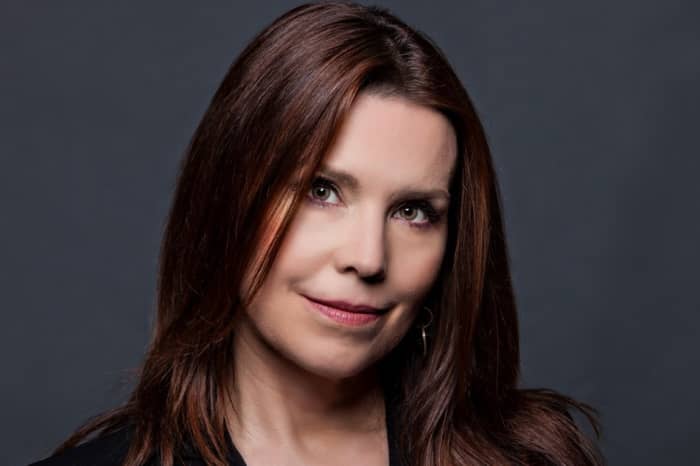Laura King, founder of King’s Fine Food, was awarded an MBE for charitable and voluntary services in 2020 for her work for people with brain tumors.
King’s Fine Food
Laura King has run a caviar business for almost 20 years — even supplying Britain’s royal family with the coveted foodstuff.
But when she started in the food industry, she wasn’t a fan of caviar, which is the name for sturgeons’ roe, or eggs. “I didn’t even like caviar,” she told CNBC by video call.
Now, she’s known as the “caviar queen,” and her firm King’s Fine Food imports hundreds of kilos of caviar into the U.K. every two to three weeks.
The company sells the delicacy to Michelin-starred chefs, upscale stores such as Harrods and Selfridges, and airlines including Cathay Pacific and Emirates.
British Airways was the company’s first customer, with King’s supplying its first-class cabins with caviar. King remembers feeling anxious when she took the airline’s director of food to a racing event during her early days in business.
“I remember thinking … ‘God, I hope he doesn’t want anything expensive to eat,'” she said, recalling her concern about the company’s tight hospitality budget.
Oscietra caviar is the most popular product sold by King’s Fine Food.
King’s Fine Food
Before starting her firm in 2004, King attempted to buy caviar supplier W.G. White, where she was sales director, but was unsuccessful. “But I thought my surname is quite strong, [so I decided to] just go out on my own,” she said.
King got a loan of £170,000 ($206,500), adding the sum to her family’s mortgage to set up an office as well as packing facilities and refrigerators — caviar must be kept at between minus 2 degrees Celsius and minus 4 degrees Celsius. And of course, the stock is expensive, starting at around £300 a kilo, King said.
“It was tough … You can’t pay yourself,” King said of the early days. “I had a husband who was working … so there was money coming in,” she said of her now late husband, John King, a chef who spent time in the kitchens of top London restaurants such as The Dorchester and Le Caprice.
Now, King oversees a team of 10, including her daughter Holly — the company’s sales director — and turns over £2.5 million to £3 million a year. About 80% of those sales are caviar, with the remainder including black and white truffles, Italian Amedei chocolates and luxury food hampers.
How to eat caviar
For those new to caviar, King suggested trying half a teaspoonful on top of a little crème fraîche spread on a warm blini, or adding a small amount of caviar to a soft-boiled egg for breakfast. You could try it on French bread too, “something that’s soft and subtle,” King said.
If you’re serving caviar for people to help themselves to, do so “in a crystal or glass bowl over ice,” King said in a company blog post, and use a mother-of-pearl spoon. “Serving caviar with silver utensils is a sin, as the metal adversely affects the flavour of this delicacy,” King added.
Caviar can be served on a blini with a little crème fraîche, according to Laura King, and, as seen here, with smoked salmon.
King’s Fine Food
One way of serving the delicacy is an absolute no-no: mixing it with chopped eggs, chives and lemon juice will “take away the taste of very poor-quality caviar,” King told CNBC.
And she’s not a fan of some less traditional ways to serve caviar. “Conran always used to serve it … on Melba toast. Now for me Melba toast is too crunchy, you know, it would ruin the caviar,” she said, referring to the late British restaurateur and designer Terence Conran.
Why is caviar so expensive?
Caviar has long been seen as a delicacy and was first eaten by Persians in the 16th century for its healing properties, according to a company blog post, while Russian nobility started consuming it in the 18th century.
Caviar is the most expensive food in the world — a 1kg tin of beluga on King’s website retails for nearly £5,000 — as the roe can only come from a sturgeon, which takes between eight and 18 years to produce eggs large enough for harvesting. The beluga species takes 12 years to produce eggs, which are of a steely grey color, according to the company.
“The finest, most expensive caviars are older, larger eggs that are lighter in colour. Lower quality caviar is younger, with a less intensely fishy flavour, and darker in colour,” King explained in a company blog post.
Caviar should be served using mother-of-pearl or horn spoons rather than those made with silver or other metals, because they can tarnish its taste, according to King’s Fine Foods.
King’s Fine Foods
“There’s a mystique about it, and in some ways it’s quite romantic,” King told CNBC.
King’s most popular product is oscietra caviar, which sells for between £33.40 for 20g and £1,669 for 1 kilo. It takes about eight years for an oscietra sturgeon to produce eggs, which have a “nutty, mellow taste,” according to the company’s website.
“Sevruga, oscietra, beluga [are] historically from Iran and Russia, those were the three caviars that everyone recognized … so I think [oscietra] sits in the middle, it’s very well received, and it’s an amazing taste,” King told CNBC.
King’s sources much of its caviar from Belgium and China, and, since new environmental protection rules were introduced in 2006, all of it is from farmed sturgeon, rather than wild.
Tips for startups
King has two suggestions for startups: Know your product and do the math. “Where are you going to buy [your product] from and where are you going to sell it, and … who will give you credit?” she said.
You’ve got to convince your suppliers that you’ll be able to pay for stock, King added. “You’ve got no record, so why is someone going to deal with you?” Her firm now has exclusive deals with farm suppliers.
Expect to be involved in the details and work hard. Nearly two decades after starting her business, King still packs the product, makes deliveries and takes empty pallets to a recycling center herself, she said.
And keep cash on hand, she added. “I’ve kept the money in the business. We have a lot of reserves, so if something happened tomorrow, I can keep going … for about three years,” King said.
King’s has also spent time building its reputation, and has had to deal with two bouts of negative publicity.
Laura King (left), founder of King’s Fine Food, with her daughter Holly King, the company’s sales director.
King’s Fine Food
The company unwittingly bought a batch of caviar labeled as sevruga, when it was in fact an inferior breed, attracting headlines focusing on the fact that it was a supplier to Fortnum and Mason, grocer to the late Queen Elizabeth II. King’s now runs a DNA testing program to avoid such mishaps.
The company ran into a similar issue in 2021, when King’s sold a mislabeled batch of caviar to London restaurant Scott’s. But that was a printing error, and King sued the newspaper that reported it, which clarified that “the mislabelling was simply a printing error and not a deliberate attempt to pass off an inferior product as a superior one.”
“We have to protect our name,” King told CNBC. King’s plans to have daughter Holly take over in the next two to three years, with King spending more time on the family’s charity, the John King Brain Tumour Foundation, which she set up after her husband died from a brain tumor.
“Caviar is the most expensive food in the world, so it’s quite nice if you can give something back [to a cause] … you’re really passionate about,” King said.
“We’re two women in business, probably the only two women in the caviar business almost in the world. We’ve worked hard and we try and do a good job,” she said.
Royal supplier
King’s Fine Food gained its royal warrant in 2021, meaning it can use the Royal Arms, a coat of arms recognizing that it is a supplier to the royal household, on its products and website.
King is hoping to keep the mark now that King Charles III has succeeded Queen Elizabeth II and she expects the royal household to review warrant holders early next year.
“We have the royal warrant for the queen. We supply the king, so I’m hoping, touch wood, we’ll keep it,” she said.
Correction: This article has been updated to reflect that King’s oscietra caviar sells for between £33.40 for 20g and £1,669 for 1 kilo.
Source link
#Meet #queen #caviar #supplies #Britains #royal #family #worlds #expensive #food








